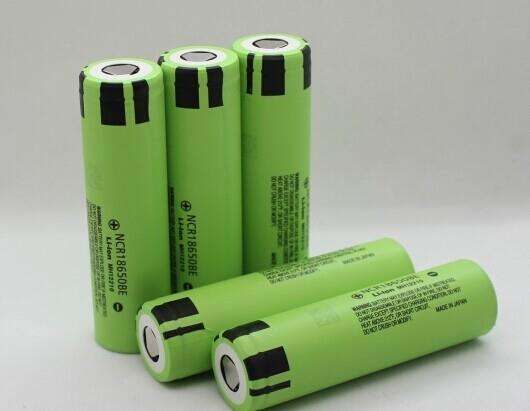Lithium Ion Battery Temperature Range Investigation
Oct 29, 2019 Pageview:1980
As a critical factor, temperature has a major impact on the performance of lithium-ion batteries and also restricts the use of lithium-ion batteries. In fact, different conditions of temperature contribute to different adverse effects. For proper battery management, accurate temperature measurement inside lithium-ion batteries and understanding the temperature effects are critical and important. Lithium-ion is the state of the art battery technology and will continue to do so in the near future, a huge market is waiting for the company to launch a battery that can beat Li-ion in safety and performance.
The effects of temperature on lithium-ion batteries at low and high temperature ranges are discussed in this study.
What is the safe operating temperature for lithium ion battery?
The safe operating temperature for lithium ion battery at which it can be used is between 10 °C to 55 °C whereas the charging of lithium ion batteries should be carried out between 5 °C to 45°C.
The "harm" of the lithium battery falls along a multi-dimensional continuum, depending on how far the excursions go beyond the prescribed limits and how long, as well as whether it is discharging or recharging, since these are opposite chemical reactions.
Some battery chemistries are more forgiving than recommended limits for some excursions. Others, like lithium, are much less tolerant, but because of their much higher energy density, the industry continues with lithium-based batteries.
Thermal Runaway is a very real risk for lithium-this is what happens when people refer to "bursting" lithium-based batteries, exploding not so much in an outward-flying shrapnel, but in an extremely warm burn that can quickly ignite other materials nearby. The risk exists until reaching that point where sustained ' smoldering ' at high white-hot temperatures that are not yet burning can also ignite surrounding materials. This kind of thing, among other Lithium incidents, has brought down planes loaded with Lithium Ion batteries in their cargo holds.
So yeah, not more than 45 °C is considered the ideal limit for Lithium during recharging, maybe 50 °C during discharging, but many researchers have seen that some of the newer big Lithium battery devices (like: Tesla Powerwall, less glamorous and usually used for commercial and industrial applications) alluring 50 °C and even 55 °C capacities, which actually scares the living electrons.
Likewise, it is typically recommended not to be used below 0 °C, particularly for loading. During these cold times it discharge, the internal resistance of the battery itself will warm the battery somewhat, which is beneficial.
Nevertheless, loading should only be carried out at + 5 ° C to + 45 ° C battery temperature. Whereas the batteries storage temperature range is at room temperature and to ensure that there is no boost loading outside this range a battery sensor is used which helps in indicating the limits.
At what temperature do lithium ion batteries explode?
Normally, lithium ion batteries do perform at elevated temperature but long exposure to heat can destroy the battery. The temperature at which the lithium ion batteries explode is 1000 °F that is 538 °C.
Why lithium ion batteries explode?
Lithium ion battery usually explode due to manufacturing defect, but the underlying issue is that Lithium-ion batteries contain a lot of power in a compact package — which is why they are used from devices to Tesla electric cars in almost everything.
A Li-ion battery has an energy density of approximately 160 watt hours per kilogram (Wh / kg), approximately twice that of a fresh alkaline battery or a rechargeable NiCad battery. It relies on three main components to generate this power: the negatively charged cathode made of metal oxide, the positively charged anode made of graphite, and the liquid electrolyte, a solvent containing lithium salts, which enables the electrical charge to pass between the two poles.
The cathode and anode need to be physically separated like two trouble makers in a school classroom has to be separated. With a permeable polyethylene separator, which can be as low as 10 microns thick, lithium-ion batteries do this. When batteries are improving and designers are striving to cram more power into a smaller package, the thin plastic separator is taxed to its limit.
In this way the separator really got thin, and the battery becomes more vulnerable when that happens and thus the separator breaks. Which in result, causes a short circuit when the separator is broken, which initiates a process called thermal run a way. This is one of the major ways that fires begin, according to Abraham. The chemicals inside the battery are starting to heat up, allowing the separator to degrade further. Finally, the battery can reach temperatures of over 1,000 ° F. At that point, when exposed to the air oxygen, the flammable electrolyte can ignite or even explode (battery explodes).
Will these catastrophic failures spell the end of the Lithium-ion battery, uncommon though they may be? But at the same time security is a concern, the design of the battery is just one of a number of factors and by improving many others factors like density of power, battery life and efficiency of charging, lithium ion batteries can still be used and will continues its state of art of technology in batteries.
Does heat affect lithium ion batteries?
Yes, heat affect lithium ion batteries as heat is the worst enemy of batteries.
Although, at high temperatures, lithium-ion works well, but excessive heat exposure limits its durability. Gas generation is subject to charging and discharging at elevated temperatures, which could cause a cylindrical cell to over flow and a pouch cell to swell. Loading above 50 ° C (122 ° F) is forbidden by many chargers.
Some lithium-based packs are cooled at high temperatures for the time being. It refers to batteries in surgical instruments which are sterilized as part of autoclaving at 137 ° C (280 ° F) for up to 20 minutes. Oil and gas drilling also exposes the battery to high temperatures as part of the fracking process.
Conclusion
Thus, it can be concluded that temperature is a key factor affecting the lithium-ion battery's dynamic efficiency and it plays an important role for the long life of lithium ion battery if used in a proper way. The goal of this study was to investigate the effects of temperature on lithium-ion battery dynamic characteristics. It is also revealed that, under high temperature conditions, the inconsistency between batteries would deteriorate by aggravating the temperature and voltage differences.
- Prev Article: Test Lithium Battery Multimeter Explanation
- Next Article: Universal Lithium Ion Battery Charger
Leave Message
Hottest Categories
-
Hottest Industry News
-
Latest Industry News











